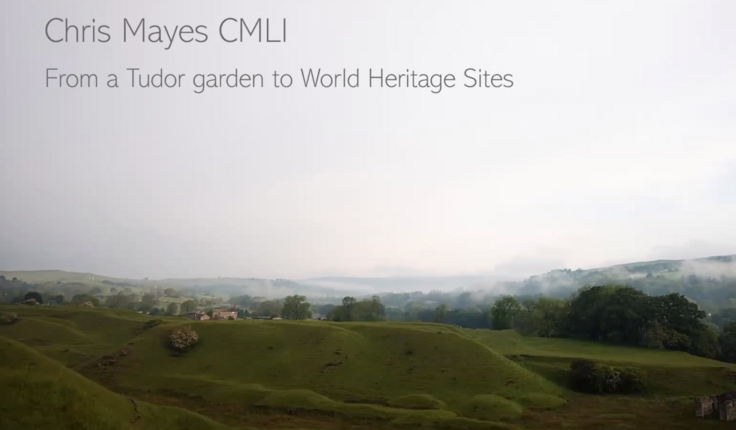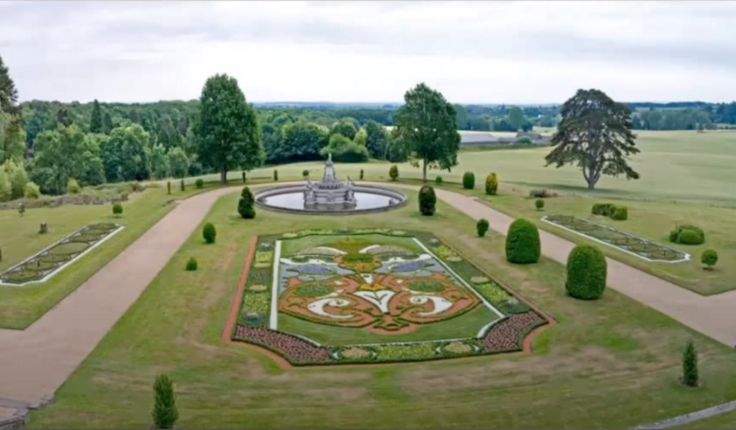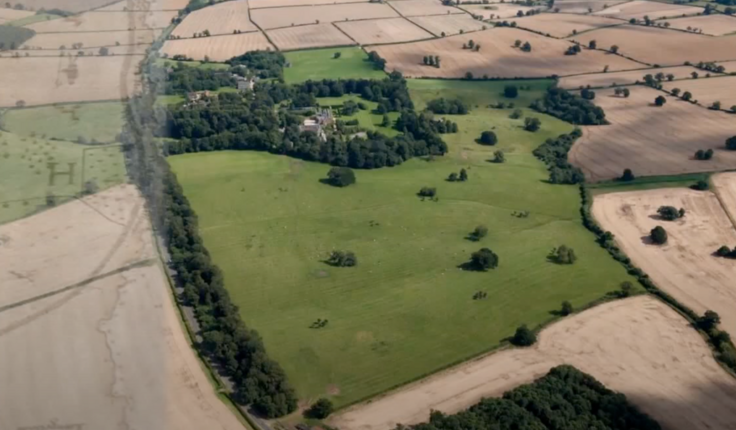News
Cultural Landscapes Q & A
Posted 11 08 2022
in News

Chris Mayes answers members questions.
The NZILA Webinar, A Tudor palace garden to world heritage sites with Chris Mayes ran on 22 July and can be viewed below.
The webinar was a great success and time didn't allow Chris to answer all our members questions. So he very kindly agreed to answer questions via email after the webinar, which we are now able to share with you.
Q: Hi Chris, are most of these remaining designed landscapes in the UK in public / English Heritage ownership or are there many still in private ownership?
CM: The vast majority of country house estates and their designed landscapes/gardens in the UK remain in private ownership. Without going into too much detail, English Heritage only manages sites where no other owner/manager can be found. The sites are in fact 'in guardianship' to the state. The National Trust own and manage a large number of historic parks and gardens; estates that have been bequeathed to them when ownership has no longer been financially viable for the original owners. Some country estates and gardens were and are still donated into local authority ownership; they were invariably modified to become public parks. Of course, public parks and cemeteries generally belong to local authorities and are managed for public access. Most privately owned parks and gardens are opened to the public as a way of raising revenue for the owners. There are also some tax incentives offered by the government to owners who allow public access to important heritage assets.
Q: Are you a member of ICOMOS Chris and other national and international heritage landscape networks?
CM: I'm not currently a member of ICOMOS, but I do follow their activities closely. As an employee of Historic England, the UK government's heritage advisory body, not being a member of ICOMOS avoids any potential conflict of interest. These do occasionally occur with some of the World Heritage Sites I'm involved with where the state parties view varies from that of the national branch of ICOMOS.
Q: How do you think climate change will impact some of the managed heritage / cultural landscapes? Is forward planning thought being put to this question? If so what are some of the outcomes?
CM: This is a really lengthy subject that would take an awfully long time to reply to, but in short; Climate change has the potential to have a huge impact on many cultural landscapes and heritage landscape assets. We've seen climate change related pests and diseases proliferate recently. This is changing the structure of many designed landscapes, for example, where the original plant material is no longer viable or too prone to infection. Box blight (Cylindocladium buxicola), Ash Die-back (Hymenoscyphus fraxineus), Sudden Oak Death (Phytophothora ramorum), and a whole host of damaging invertebrates have been directly linked to climate change. Add to the equation storm events, increased peak summer temperatures and increased rainfall - the latter having the potential to cause considerable physical damage to sites - and there are few, if any sites that are not challenged.
Furthermore, we're seeing a number of direct and indirect threats to cultural and heritage landscapes in the form of responses to climate change. For example, many historic urban public parks are being seen as places where a 'quick fix' flood attenuation measure can be implemented. This is simply moving the problem in the short-term, not tackling the cause or designing a long-term, sustainable solution. Similarly, I'm seeing many plans for 're-wilding' in historic country house estates and parklands. The really sad thing is that these landscapes are already rich in biodiversity due to continued and sustained management over, often, hundreds of years. Continuity of use and occupation creates the stability needed for many less-mobile species and are the last refuges for small fragments of valuable habitat. What is effectively 'abandonment' to natural processes denies that history of use and occupation and actually threatens those species and habitats. The vast hectares of arable 'desert' that exist in much of the English landscape would be far more suited to being made more 'natural'.


Planning for climate change in heritage and cultural landscapes is still in its infancy, if it is happening at all. A strong tradition of 'conserve as found' all too often translates into 'resist change' management policies and actions. I see too many management plans that still only have policies that seek to 'monitor the effects of climate change'. While monitoring is of course necessary, we do need to start taking some informed actions.
So in terms of 'outcomes', we're still seeing too little action taking place either in relation to understanding the resilience of heritage and cultural landscapes - established land management systems and habitats can be robust with just evolutionary changes rather than radical action - but we don't fully recognise that yet. And we are not using that understanding, a 'time-deep' understanding, to make informed decisions about management.
Q: Given your opinion that people and landscape are integral, what for you would be a new definition of cultural landscape?
CM: I don't feel we need a new definition of cultural landscape. The existing UNESCO definition '...the combined works of nature and humankind that express a long and intimate relationship between peoples and their natural environment...' is more than adequate. I believe it is the application and interpretation of this definition that is currently at fault or lacking. All too often I see people being put 'outside' of the equation; divorced from the natural as if people aren't 'natural'. We're, perhaps understandably, in a time that treats humans and nature as being in conflict. However, many of our ecosystems function with people as part of the system, not just beneficiaries of the outcomes or despite people. Well-defined and properly understood cultural landscapes can provide the examples and clues as to how to return the most damaged places to functioning, sustainable systems. Increasingly I'm seeing a reaction to cultural landscape conservation as it is perceived as 'preserving' something which, to some, is anachronistic. Much of this comes from an inappropriate application of a 'conserve as found' approach. But it equally comes from some people presenting an idealised 'model' of the natural world that doesn't include people as part of the system, just beneficiaries of the services resulting from a functioning system. So what I'm really looking for is a repositioning of people within landscapes. Not solely the recipients of ecosystem goods and services. Not interpreters or observers of landscapes and ecosytems. But active participants in the landscape and natural systems that sustain biodiversity (including people) and the planet. Cultural landscapes are the textbooks and records of systems that functioned in the past, persist and, through informed management, continue to function sustainably into the future.
Q: For New Zealand, the last substantial land mass to be colonized, with human occupation only occurring over the past approximately one thousand years, and with its natural ecosystems having evolved in the absence of mammals, (notwithstanding our native bat species), and in the absence of all human influences, being geared to their own self-driven processes: (and in the absence of the many plant species now introduced to the country): How do so called “cultural” landscapes relate to “natural” landscapes in this context and how does one consider original natural ecosystems relative to the changing ecosystems now upon us caused by animal and plant introductions from humans, and climate change? What drivers might help determine carbon sequestration here?
CM: Much of what I have put in my previous reply applies. The first point to make is that in the model presented in this question, humans are seen as the only 'colonisers'. This is putting them outside of the landscape and ecosystems by marking an anthropocentric point in time. The lack of 'native' mammals is noted in the question, but caveated by 'apart from our native bat species'. The 'native' bat species were once colonisers too, and will have disrupted the ecosystem they arrived in, no doubt making quick work of many species of invertebrates that had evolved without defence mechanisms against nocturnal predators. Similarly, many bird species will have 'arrived' on the land mass, themselves colonisers and bringing with them what would now be considered 'native' plant species. It is true of course, that human colonisation and introductions are the most harmful to the ecosystems that are most suited to soils and climate present, because we have historically sought to exploit the land.
I have a theory that European colonisation of New Zealand was particularly exploitative as it came during a period of 'muscular' Christianity (man's dominion over nature) and empire (state legitimised exploitation for the betterment of the mother country). I believe our role as the current custodians of the landscape is to correct some of the mistakes of the past through informed and intelligent management decisions. For example, programmes that seek to remove the most harmful introduced species from the ecosystem should be accelerated, but also carefully monitored to ensure there is no accidental 'system shock'. Some aspects of natural systems benefit from perturbation, whereas others require stasis. Too rapid change may result in more catastrophic imbalance than intended. I also believe that landscapes that are defined as 'cultural landscapes' illustrate where people have existed within an ecosystem without catastrophic imbalance. They illustrate a degree of symbiosis and a continuity of use and occupation that allowed and allows for natural adaptation and evolution (of all species, including humans, and habitats). This is why it is inappropriate to manage cultural landscapes 'as found'; the process of evolution must continue. Where cultural landscapes will be most effective will be in providing the blueprints for the adaptation and management of systems that are currently unsustainable (much of 20th century agricultural practice for example). This in turn could help with increasing carbon sequestration. As an example, in some scenarios low-input permanent pasture/grazing systems have been shown to sequester carbon at a faster rate than woodland. There are cultural landscapes that illustrate a type of grassland management that sustains a viable livestock output without inputs, and maintains high levels of biodiversity while sequestering significant levels of carbon. While the outputs may come at a premium, it should be an informed societal choice as to whether this is worth paying.
SPEAKER:
Chris Mayes is a Chartered Member of the Landscape Institute in the UK. He started his career training to be an architect but found that what surrounded buildings held greater fascination than the buildings themselves, and moved toward a career focussed on landscapes, and particularly heritage and cultural landscapes. That career path has involved working as part of the management team on a private estate in Northamptonshire, local government landscape officer positions with a number of local authorities and more recently employment with both Natural England, the UK government’s advisory body on the natural environment, and Historic England, the sister body with responsibility for the historic environment.
As a landscape specialist with Natural England he was part of a small team that produced National Character Area profiles for England. His current role with Historic England sees him providing advice on heritage and cultural landscapes in the North of England. His experience over the last twenty years has been varied, ranging from; assessing the potential impacts and effects of numerous major developments on significant and designated landscapes – including the proposed Hinkley Point C nuclear power station and Severn Tidal Barrage in Somerset and many wind farm proposals both on-shore and off-shore; to researching and advising on the management of historic parks, gardens and cemeteries; to researching and authoring the Green Infrastructure Strategy for Herefordshire and developing a ‘views analysis’ tool with the Malvern Hills Area of Outstanding Natural Beauty.
Chris currently sits on both the Steering Group and Technical Advisory Group of the English Lake District World Heritage Site. The award of an MSc (with distinction) in the Conservation of Historic Gardens and Cultural Landscapes by the University of Bath in 2009, with a dissertation on 19th century provincial burial ground design, was followed by three years of research into the impacts of wind energy development on the setting of cultural landscapes. Chris even spent some years working as a professional falconer.
Share
19 Dec
Christmas break 2025

see you from 12 January
As we wrap up another big year, we’re taking a moment to pause, breathe, and enjoy a well-earned break. Meri …
18 Dec
President’s update

December 2025
Earlier this month I attended the Ngā Aho Māori Design Professionals Wānanga-ā-Tau at Te Aranga Marae in Flaxmere. Tuia Pito …
18 Dec
Awards 2026 update

An update as we warm up for the 2026 Awards kaupapa. Submissions will open in March and will run for …
Events calendar
Full 2025 calendar